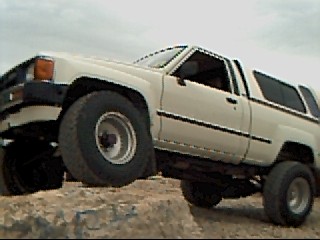|
Driving on
PADRE ISLAND NATIONAL SEASHORE
5 PART How-To
guide
By: Manuel Z |
||
|
Going to the PADRE ISLAND NATIONAL SEASHORE (P.I.N.S.) or " BIG SHELL " as most people call it, has become quite a ritual among Surf Fishing experts and novices alike in South Texas. Even though there is no food, water, gas or lighting anywhere along this stretch of beach doesn't keep people from venturing into the unknown. I've heard from different sources that P.I.N.S. consist of anywhere from 50 to 80 miles of deserted sandy/shelly beach and some of the best SURF FISHING in the world. I read an article a while back that stated there is no such thing as a "Honey Hole" on P.I.N.S. or on any beach as far as I'm concerned, This fact is because the terrain in and out of the water is constantly changing, You wouldn't believe how fast it changes in the water compared to the land. If you're catching fish in one spot and the action suddenly stops... Try fishing 20, 50 or even 100 yards to one side of where you were catching fish before. The terrain/structure in the water changed and the fish will move along with it. Capt.
Billy Sandifer a well known and respected Surf Fishing and Bird
Watching guide from Padre Island Safaris states: For more Big Shell fishing tips, visit http://www.billysandifer.com Now, On with the driving information... The Vehicle Of course the main thing you need for deserted beach driving is a 4WD vehicle. Although you will occasionally see people out there in a 2WD vehicle. These people are either Very experienced, Very brave or Very Foolish. If they make it in and out without getting stuck they are Very Lucky! Don't go to Padre Island National Seashore without a 4WD vehicle. New -vs- Old
It doesn't matter What make or model your vehicle is. As long as it is a 4WD, If you need more information on a particular vehicle, Simply contact as many people with that type of vehicle and ask questions. Message boards on the internet are very valuable in this aspect. My best advice to you is: If you don't trust your vehicle on the road... Trust it less on the 4WD ONLY beaches! Vehicle Checklist Check the following things before you leave home
|
||

 Check your wheels for abnormalities or wear.
Check your wheels for abnormalities or wear.